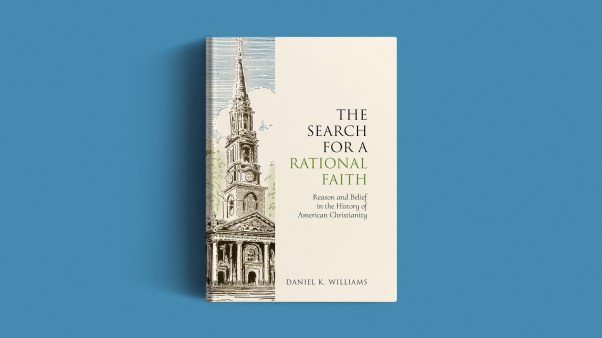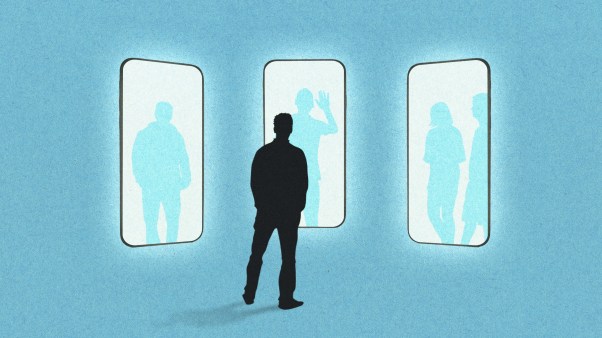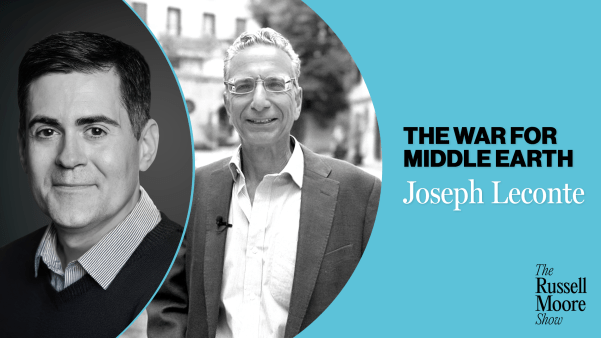What exactly am I? And what are you? The nature and essence of human beings is one of the most widely discussed and hotly debated topics not just of our time but arguably of all time.
Are we just advanced apes? Are we just machines one day to be artificially upgraded? Are we souls that will one day break free of our physical confines and float off to some higher state of being? Human beings have asked these questions since antiquity. In recent decades, they have been thrust back into the limelight through the advance of neuroscience and through the claims of scientists like Francis Crick, who suggests that humans are “nothing but a pack of neurons.”
The approach many scientists take, often unquestioningly, presumes that matter (atoms, molecules, and the forces of nature) explains everything—or will do so eventually, given enough time. And this approach carries over to larger questions about human nature. Many neuroscientific authorities argue that all aspects of our being are reducible to the workings of our brains.
Christian apologists often respond to this materialist outlook by showing its insufficiency. We don’t just have a brain, they argue, but also a mind, a self. There is a conscious you and a me that cannot be captured simply by measuring the activity of nonconscious neurons.
Stan W. Wallace is responding to a different kind of argument in his excellent book Have We Lost Our Minds? Neuroscience, Neurotheology, the Soul, and Human Flourishing. He contends that the “you are your brain” view has leaked into Christian thinking, albeit cloaked in spiritual language.
Wallace, president of an academic ministry called Global Scholars, focuses attention on two thinkers in particular: Christian psychiatrist Curt Thompson, author of Anatomy of the Soul: Surprising Connections Between Neuroscience and Spiritual Practices That Can Transform Your Life and Relationships; and spiritual-formation expert Jim Wilder, author of Renovated: God, Dallas Willard, and the Church That Transforms.
For Thompson and Wilder, neuroscience is more than a means to understand the workings of the brain during our spiritual, intellectual, and emotional experiences. In fact, they describe it as the new route to spiritual maturity.
On this view, growing in Christlikeness involves engaging and understanding the workings of our cerebral cortex more than being transformed by the renewing of our minds. As deeply relational beings, we find the key to growth in forming love attachments with God and others. According to Thompson and Wilder, this happens primarily through the brain. Wallace sums up their perspective like this: “In effect, the prefrontal cortex is me, and therefore it must be fully functioning for me to be known and know others in secure and healthy relationships.”
Wallace describes this endeavor as “neurotheology,” which he defines as integrating “the findings of neuroscience” with “the theology of spiritual formation.” He is keen to show that this trendy and seemingly innocuous project is potentially seismic at its core, and he speculates about two potential causes. Either it originates from a lack of philosophical training to understand the distinction between the brain and the mind or soul, or it stems from a belief that humans are not in fact an amalgam of body and soul, brain and mind, or physical and spiritual elements. They are just a body. Just a brain. Just a physical machine. Have We Lost Our Minds? is a response to Christian materialism.
What can we say in return? Brains don’t think. People think using their brains. Brains don’t form love attachments. People choose to love. As Wallace sat down to write his book, it was him doing the writing. Yes, his brain was engaged in the process, and a well-designed imaging study would have captured myriad neural networks at work. But even the most sophisticated measurements could not have captured what he had in mind to write.
People—not brains—write books. This is an important but often misunderstood point. The self, or soul, and the brain are very closely connected. But this doesn’t mean they are identical or conceptually interchangeable. Mind and brain are, in fact, two very distinct entities.
Wallace is well placed to write this book, having completed doctoral studies in philosophy alongside a ministry degree. He deftly navigates both the technical arguments and their application in daily life. He makes clear at the beginning that his aim is not to cast doubt on neuroscience itself. We all benefit from the valuable insights into brain function and human behavior this discipline affords us. In fact, some neuroscientists, such as Andrew Newberg, define neurotheology much more neutrally as “an interdisciplinary field that combines neuroscience and theology” and “explores the relationship between the brain and religious experiences.”
Have We Lost Our Minds? does not critique that kind of neurotheology. Instead, the book responds to a bolder variant that sees neuroscience as the new road to spiritual maturity and human flourishing. This kind of thinking sees biblical references to mind and soul as referring to the brain, even to the point of applying them to Christ himself. For instance, in Anatomy of the Soul, Thompson suggests that “Jesus’ mind … reflects the most integrated prefrontal cortex of any human of any time.” Taken to its logical conclusions, Wallace argues, this thinking is not only false but also potentially capable of leading Christians astray.
In contrast, Wallace argues that a proper understanding of human nature, spiritual formation, and human flourishing ought to come from the combined insights of theology and philosophy, as well as from neuroscience. If humans are made in the image of an immaterial God, then there must be an immaterial dimension to our human makeup, which Wallace—in alignment with J. P. Moreland, Dallas Willard, and others—describes as a soul.
In Willard’s words, a soul is “that in us which combines all the dimensions of the person to form one life.” The Bible regularly refers to an unseen dimension of the self with words like heart, soul, mind, spirit, and inner being. Scripture tells us we are outwardly wasting away but are inwardly being renewed each day (2 Cor. 4:16).
Biblically speaking, then, there are certainly dualities to our human makeup. Wallace’s book revolves around defending what he calls holistic dualism—the belief that body and soul are distinct substances, both of them able to bring about causal change in the world, yet in a deeply integrated way.
As Wallace puts it, “The Scriptures teach that we are a functional unity of soul and body but also an ontological duality, with the soul being the more fundamental aspect of what we are.” He goes on to suggest that this view makes best sense of neuroscientific discovery. Wallace takes time to address misunderstandings about dualism, arguing that the holistic version differs from various predecessors, such as Cartesian dualism (named after René Descartes, known for the iconic phrase “I think, therefore I am”), which infers a much more token interaction between soul and body.
Another key goal for Wallace is in correcting misinterpretations of the late Dallas Willard’s view of humanity. According to Wallace, Wilder and Thompson argue that Willard embraced neurotheology (in the less neutral sense) toward the end of his life. Accordingly, they reframe his view on the soul in physical terms. Wallace cites a remark from Wilder’s book Renovated: “The brain happens to contain a structure whose function is the integration of all internal states and external connections with others.” Thus, when Willard “describes our experience of the soul, … he could hardly have described the cingulate [cortex] in clearer terms.”
Does this reframing do justice to Willard’s position? Apparently not, according to those who knew him well, such as philosopher J. P. Moreland. Wallace gives evidence that Wilder and Thompson misinterpreted Willard’s support of understanding brain function as a wholehearted support of their neurotheology. Wallace notes that Willard never used soul and brain interchangeably. He consistently referred to people as embodied souls.
Have We Lost Our Minds? is well pitched to a nonspecialist audience with short, digestible chapters and helpful summaries. Yet there are also detailed footnotes and a glossary for anyone wanting to go deeper. The first few chapters unpack the relationship between the mind and the brain, showing how and why they are distinct, albeit closely connected. The middle of the book examines the nature of the soul, tracing the influence of Aristotle and Thomas Aquinas to the present day.
The final part of the book focuses on application. What we believe about human nature is so important because it shapes how we love God and others. Wallace portrays materialism (which denies the soul) and Cartesian dualism (which diminishes the body) as two opposing extremes. Holistic dualism, however, offers a “responsible middle way” toward human flourishing.
We are best placed to love God and grow into the likeness of Christ when both body and soul are engaged. Worship, in this view, extends beyond spiritual activities like prayer to encompass embodied practices like fasting and service. On the other hand, spiritual formation is not something we can passively allow our brains to do on our behalf. Brains don’t form love attachments. People do this, which is why the thinking that takes it out of our hands is potentially harmful. The soul and will must choose to engage with God and with the spiritual disciplines that provide the vehicle for transformation.
What does this all mean for loving others? Wallace argues that holistic dualism provides a strong motivation for evangelizing and doing mission work, caring for the vulnerable, pursuing justice, and loving others in the workplace. It truly matters that we adopt a biblical view of the soul and body, because this overflows into who we are and what we do every day.
Have We Lost Our Minds? is a helpful addition to ongoing conversations on human nature. Anyone wanting to think Christianly about neuroscience—what it can and cannot tell us about human nature and spiritual formation—will definitely find it worthwhile.
Sharon Dirckx holds a PhD in neuroimaging from the University of Cambridge. She is a speaker, broadcaster, and author of books, including Am I Just My Brain?

















